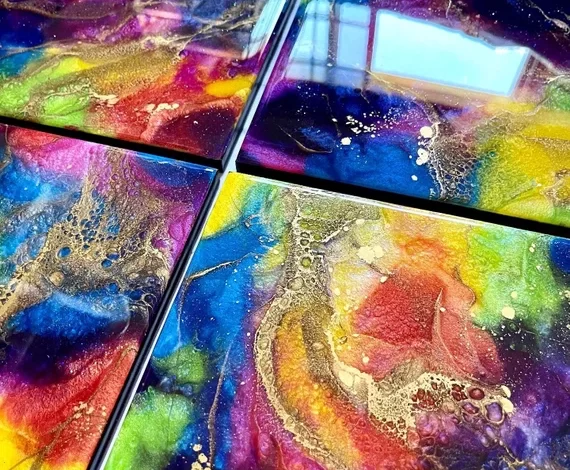Epoxy Resin Gloss: How to Use It to Cover Your Artwork’s Surface

Art is not limited to paper drawing, only to be later packed in a file inside the cupboard. You can easily find artworks on just about any random surface these days. Whether it is a wooden plank or a metal slate, you can creatively turn any material into a showstopper with your ideas.
So, to make your artwork safer, you can coat them with products like Craft Smart resin-based liquid gloss. It will prevent the surface from being affected by any scratches or marks while adding a glass-like touch.
As such, here is the process of using liquid gloss to laminate your art:
Prepare the Workspace
Products like Craft Smart liquid gloss contains resin and needs to be carefully handled. But before proceeding, you need to check that the workshop gets plenty of ventilation. Also, ensure that the room is not very dusty, as the dirt particles can stick to the surface and cure with the liquid gloss. Moreover, cover the table and floor so that any product does not spill out and do unwanted damage.
Prepare the Painting
Depending on the canvas size you are working on, ensure that the painting is finished. Remove all sorts of remains like hair, dirt particles, pencil sharpenings, chalk dust etc. Meanwhile, the canvas could be made of any non-porous surface like glass, wood, terracotta, ceramic tiles, papier-mâché etc.
Spread the Liquid Gloss
Ensure that your art canvas is kept on a horizontal surface to prevent the liquid from accumulating at the bottom part of the painting. Evenly spread out the liquid gloss with the help of an ice cream stick or a playing card. You can also use other items like a scale or even your hands to cover the painting in a better way.
Watch Out for the Bubbles
After covering the surface with the liquid gloss, you can see the air seep in and create bubbles at various places. So, try removing all the bubbles manually, and you can use a low flame butane or propane torch for a larger surface area.
However, do not use it for an extended time as it may cast a damaging yellow layer on the artwork. Also, keep the torch at a minimum distance of eight to ten inches from the surface at all times.
Cover While Drying
Now that you are done applying liquid gloss on the painting surface keep it dry after it is nicely covered. There are chances of the wet, sticky surface attracting more dirt particles from the surroundings.
Also, to cover your artwork more conveniently, you can place a big box over the surface in an inverted manner. Read the back of the tube to check the number of hours required for the product to dry. As such, the best time to recoat any painting would be 48 hours after the first coat.
Artists commonly laminate the art surface with a varnish coating. It prevents the addition of any scratches or marks on the surface. However, varnish coating can take a lot of time, and it is equally essential to ensure that your craft does not go through any wear and tear or get accumulated with dust over time. So, to counter this issue, you can use resin-based liquid gloss.
You can use this epoxy resin substance to cover up all kinds of non-porous surfaces whatsoever. And the entire process will secure your artwork and leave it looking much glossier.





